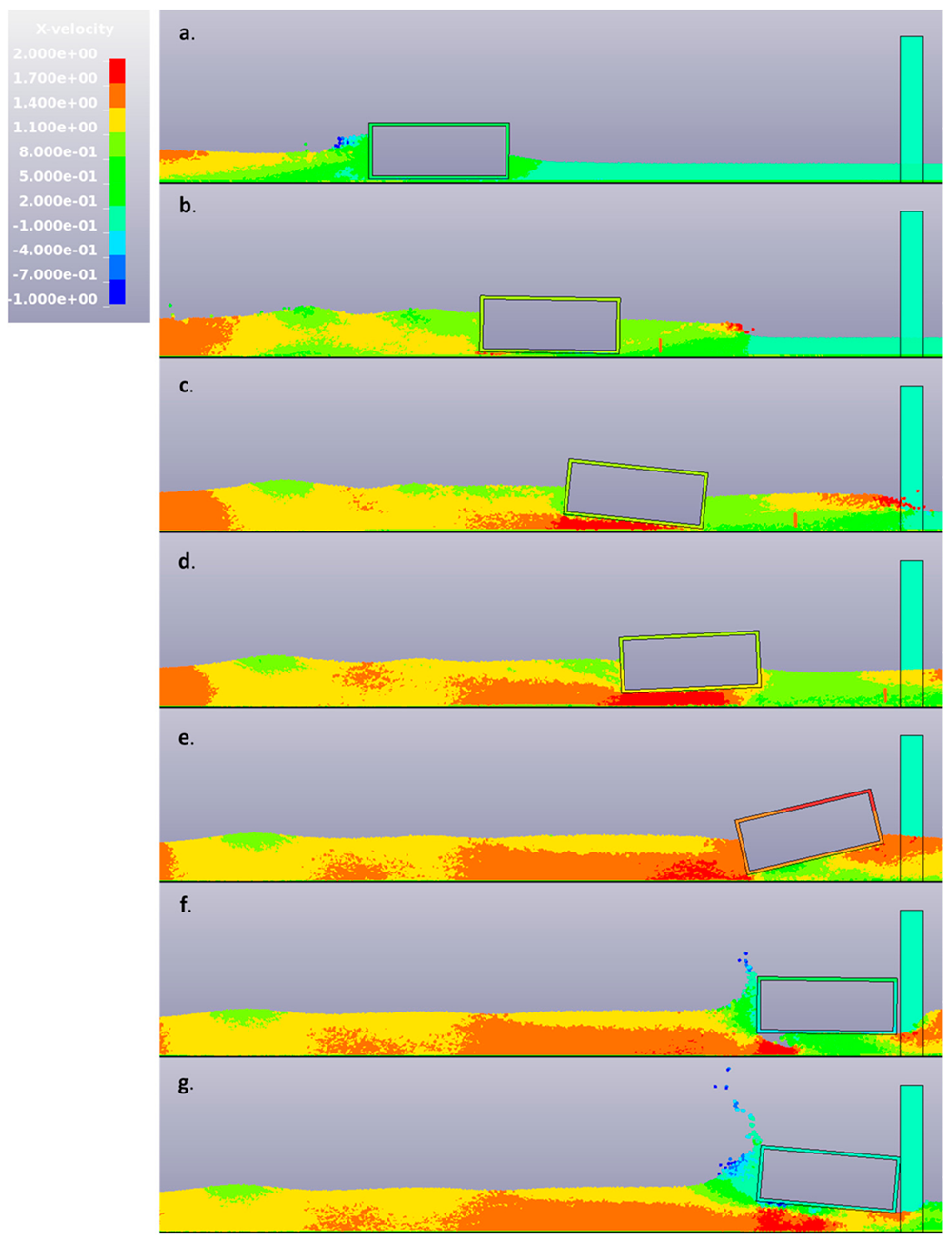Data Reuse Case Studies
Numerical and Experimental Validation
Understanding Tsunami-Debris-Structure Interactions via SPH-FEM (Hasanpour et al, 2021)

When the pandemic upended their plan to conduct experiments funded by the Pacific Earthquake Engineering Research Center (PEER) to understand bridge damage caused by tsunami debris, the team at the University of Nevada Reno (UNR) decided to use solely a numerical approach. Dr. Denis Istrati, the co-principal investigator of the project, explained that although reconnaissance surveys after major tsunamis like the 2011 Tohoku ?sunami in Japan revealed the catastrophic effects of water-borne debris on transportation infrastructure, this phenomenon had not been deciphered and quantified yet. This could be attributed to the complexity of the tsunami-debris-bridge interaction, such as, its multi-physics nature and the uncertainty in reproducing it numerically via traditional coastal engineering tools and computational fluid dynamics methods. Searching for anything related to tsunamis in DesignSafe, he found a dataset from an experiment at the Oregon State University Large Wave Flume that measured impact forces on a column due to floating debris impact. This data published by Ko & Cox (2012) was used to calibrate a novel multi-physics SPH-FEM approach implemented by the UNR team. Although this experiment did not include a full coastal bridge structure, it allowed the team to demonstrate the accuracy of the method in estimating the debris propagation and the impact force on a vertical column, which are key components to understanding the effect on a bridge structure. Istrati remarked that the scale, quality, and completeness of the data were fundamental to the success or their work. He also remarked on the research value of the different types of data published. For example, the videos of the experiment revealed that the tsunami bores flow faster than the debris, and they found that this behavior was also captured by their numerical model. Dr. Istrati explained that the availability of data allowed them to fulfill their research commitment economically and effectively. Importantly, it disrupts the notion that data belongs only to the original researcher, and it shows that sharing data allows researchers to have a bigger impact.
Publication Reusing Data:
Hasanpour, Anis, Istrati, Denis, Buckle, Ian G. Multi-Physics Modeling of Tsunami Debris Impact on Bridge Decks. ICONHIC 2022 3rd International Conference on Natural Hazards & Infrastructure, 5-7 July 2022, Athens Greece. EID: 2-s2.0-85137813076, ISSN: 26234513
Hasanpour A, Istrati D, Buckle I. Coupled SPHFEM Modeling of Tsunami-Borne Large Debris Flow and Impact on Coastal Structures. Journal of Marine Science and Engineering. 2021; 9(10):1068. https://doi.org/10.3390/jmse9101068(opens a new window)
Dataset Reused:
Ko, Harrison; Cox, Daniel, (2012), "OSU: 1-D Hydraulic Experiment, Aluminum, NS = 110.7 lbs, Water depth = 257.2 cm", DesignSafe-CI [publisher], https://doi.org/10.4231/D39Z90C0X(opens a new window)
Impact of Data Reuse
Numerical and Experimental Validation Case Studies
Integrated seismic response predictions
Hysteretic finite element model of structural beams
Seismic Response of Cut and Cover Tunnels
Understanding Tsunami-Debris-Structure Interactions via SPH-FEM
Monitoring structural damage using CCTV data: a complete data lifecycle







